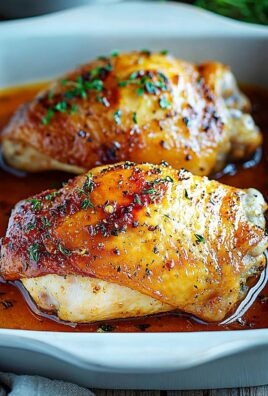Vietnamese Beef Stew, or Bò Kho as it’s known in Vietnam, is a culinary hug in a bowl, and I’m so excited to share my family’s recipe with you! Imagine tender, melt-in-your-mouth chunks of beef, simmered in a rich, fragrant broth infused with star anise, cinnamon, and a hint of chili. Are you drooling yet? I know I am just thinking about it!
This isn’t just any beef stew; it’s a dish steeped in history, reflecting Vietnam’s French colonial past. The influence is evident in the use of beef and the stewing technique, but the vibrant flavors are distinctly Vietnamese, showcasing the country’s unique spice blends and fresh herbs. Vietnamese Beef Stew is a testament to culinary fusion at its finest.
But what makes Bò Kho so beloved? It’s the perfect balance of savory, sweet, and subtly spicy notes that dance on your palate. The beef becomes incredibly tender during the slow simmering process, practically dissolving in your mouth. Plus, it’s incredibly versatile! Enjoy it with crusty bread for dipping, rice noodles for a comforting slurp, or even over steamed rice for a hearty and satisfying meal. Whether you’re looking for a comforting weeknight dinner or a dish to impress your guests, this recipe is sure to become a new favorite.
Ingredients:
- 2 lbs beef chuck, cut into 1.5-inch cubes
- 2 tbsp vegetable oil
- 1 large onion, chopped
- 4 cloves garlic, minced
- 1 inch ginger, peeled and minced
- 2 tbsp tomato paste
- 4 cups beef broth
- 1 cup water
- 1/2 cup red wine (optional, but highly recommended!)
- 2 tbsp fish sauce
- 1 tbsp soy sauce
- 1 tbsp sugar
- 1 tsp five-spice powder
- 1/2 tsp salt, or to taste
- 1/4 tsp black pepper, or to taste
- 2 carrots, peeled and cut into 1-inch pieces
- 2 potatoes, peeled and cut into 1-inch pieces
- 1 stalk lemongrass, bruised
- 2 star anise
- 1 bay leaf
- Fresh cilantro, for garnish
- French bread, for serving
- Optional garnishes: sliced green onions, Thai basil
Preparing the Beef:
- First, let’s get our beef ready. Pat the beef chuck cubes dry with paper towels. This is crucial for getting a good sear, which adds tons of flavor to the stew.
- In a large Dutch oven or heavy-bottomed pot, heat the vegetable oil over medium-high heat. You want the oil to be shimmering hot, but not smoking.
- Add the beef cubes to the pot in a single layer, being careful not to overcrowd. If you overcrowd the pot, the beef will steam instead of sear. Work in batches if necessary. Sear the beef on all sides until nicely browned, about 3-4 minutes per side. This browning is key for developing a rich, deep flavor.
- Remove the seared beef from the pot and set aside. Don’t worry about cooking the beef all the way through at this point; we’ll be simmering it later.
Building the Flavor Base:
- Now, let’s build our flavor base. In the same pot, add the chopped onion and cook until softened and translucent, about 5-7 minutes. Scrape up any browned bits from the bottom of the pot those are packed with flavor!
- Add the minced garlic and ginger and cook for another minute, until fragrant. Be careful not to burn the garlic, as it can become bitter.
- Stir in the tomato paste and cook for 1-2 minutes, allowing it to caramelize slightly. This will add depth and richness to the stew.
Simmering the Stew:
- Return the seared beef to the pot.
- Pour in the beef broth, water, and red wine (if using). The red wine adds a wonderful complexity to the stew, but it’s perfectly fine to omit it if you prefer.
- Add the fish sauce, soy sauce, sugar, five-spice powder, salt, and pepper. Fish sauce might sound intimidating, but it adds a savory umami flavor that’s essential to Vietnamese cuisine. Don’t be afraid to experiment with the amount to your liking.
- Add the carrots, potatoes, bruised lemongrass, star anise, and bay leaf. Bruising the lemongrass releases its aromatic oils, infusing the stew with its citrusy flavor.
- Bring the mixture to a boil, then reduce the heat to low, cover, and simmer for at least 2-3 hours, or until the beef is very tender. The longer it simmers, the more flavorful the stew will become. Check the stew periodically and add more water if needed to keep the beef submerged.
- After 2-3 hours, check the tenderness of the beef. It should be easily pierced with a fork. If it’s still tough, continue simmering for another hour or so.
Adjusting and Serving:
- Once the beef is tender, remove the lemongrass, star anise, and bay leaf from the stew. These have done their job of infusing the stew with flavor, and we don’t want anyone accidentally biting into them.
- Taste the stew and adjust the seasoning as needed. You may want to add more salt, pepper, fish sauce, or sugar to balance the flavors.
- If the stew is too thin, you can thicken it by simmering it uncovered for a while longer, allowing some of the liquid to evaporate. Alternatively, you can mix a tablespoon of cornstarch with two tablespoons of cold water to create a slurry, then stir it into the stew and simmer for a few minutes until thickened.
- Serve the Vietnamese beef stew hot, garnished with fresh cilantro, sliced green onions, and Thai basil (if using). The classic accompaniment is crusty French bread, perfect for soaking up the delicious broth.
Tips for the Best Vietnamese Beef Stew:
- Use good quality beef: The better the quality of the beef, the better the stew will taste. Look for beef chuck with good marbling.
- Don’t skip the searing: Searing the beef is essential for developing a rich, deep flavor.
- Be patient: The longer the stew simmers, the more flavorful it will become.
- Adjust the seasoning to your liking: Don’t be afraid to experiment with the amount of fish sauce, soy sauce, sugar, and spices to create a stew that suits your taste.
- Make it ahead of time: This stew tastes even better the next day, as the flavors have had time to meld together.
- Spice it up: If you like a little heat, add a pinch of red pepper flakes or a sliced chili pepper to the stew.
- Add other vegetables: Feel free to add other vegetables to the stew, such as daikon radish, taro root, or mushrooms.
- Serve with a squeeze of lime: A squeeze of fresh lime juice adds a bright, citrusy note to the stew.
Variations:
- Pho-inspired: For a pho-inspired version, add a cinnamon stick and a few cloves to the stew. Serve with rice noodles instead of French bread, and garnish with bean sprouts, jalapenos, and lime wedges.
- Coconut milk: For a richer, creamier stew, add a can of coconut milk during the last hour of simmering.
- Spicy peanut: For a spicy peanut version, add a few tablespoons of peanut butter and a pinch of red pepper flakes to the stew.
This Vietnamese Beef Stew is a labor of love, but the end result is well worth the effort. The tender beef, flavorful broth, and aromatic spices create a truly unforgettable dish. Enjoy!

Conclusion:
This Honey Sesame Chicken recipe isn’t just another weeknight dinner; it’s a flavor explosion waiting to happen! The perfect balance of sweet honey, savory sesame, and a hint of tanginess creates a truly irresistible dish that will have everyone at the table asking for seconds. I’ve made this countless times, and it’s always a hit, even with picky eaters. The crispy chicken, coated in that luscious sauce, is simply divine.
But what truly makes this recipe a must-try is its versatility. It’s quick enough for a busy weeknight, yet impressive enough to serve to guests. Plus, it’s incredibly adaptable to your own tastes and preferences.
Serving Suggestions and Variations:
For a classic pairing, serve this Honey Sesame Chicken over a bed of fluffy white rice or fragrant jasmine rice. Brown rice or quinoa are also excellent, healthier alternatives. To add some vibrant color and extra nutrients, consider serving it alongside steamed broccoli, stir-fried vegetables like bell peppers and snap peas, or a simple side salad.
Want to kick things up a notch? Add a pinch of red pepper flakes to the sauce for a touch of heat. Or, for a richer, more complex flavor, try using toasted sesame oil instead of regular sesame oil. If you’re not a fan of chicken, this recipe works beautifully with shrimp or tofu. Simply adjust the cooking time accordingly.
Another fun variation is to serve the Honey Sesame Chicken as lettuce wraps. The crispy chicken and flavorful sauce pair perfectly with the cool, crisp lettuce leaves. Top with shredded carrots, chopped peanuts, and a drizzle of sriracha for an extra layer of flavor and texture.
If you’re looking to meal prep, this recipe is your best friend. The chicken can be cooked and stored in the refrigerator for up to three days. The sauce can also be made ahead of time and stored separately. When you’re ready to eat, simply reheat the chicken and sauce, and toss them together.
Time to Get Cooking!
I truly believe that this Honey Sesame Chicken recipe will become a staple in your kitchen. It’s easy to make, incredibly delicious, and endlessly adaptable. So, what are you waiting for? Gather your ingredients, put on your apron, and get ready to create a culinary masterpiece.
I’m so excited for you to try this recipe! Once you’ve made it, I’d love to hear about your experience. Did you make any modifications? What did you serve it with? What did your family and friends think? Share your photos and stories in the comments below. Your feedback is invaluable, and it helps me to continue creating recipes that you’ll love. Happy cooking! And don’t forget to tag me in your social media posts I can’t wait to see your creations! Let’s spread the Honey Sesame Chicken love!
Vietnamese Beef Stew: A Flavorful and Easy Recipe
Tender beef chuck simmered in a rich, aromatic broth with carrots, potatoes, and fragrant spices. Served with crusty French bread, this Vietnamese Beef Stew (Bo Kho) is a comforting and flavorful dish perfect for a cold day.
Ingredients
- 2 lbs beef chuck, cut into 1.5-inch cubes
- 2 tbsp vegetable oil
- 1 large onion, chopped
- 4 cloves garlic, minced
- 1 inch ginger, peeled and minced
- 2 tbsp tomato paste
- 4 cups beef broth
- 1 cup water
- 1/2 cup red wine (optional)
- 2 tbsp fish sauce
- 1 tbsp soy sauce
- 1 tbsp sugar
- 1 tsp five-spice powder
- 1/2 tsp salt, or to taste
- 1/4 tsp black pepper, or to taste
- 2 carrots, peeled and cut into 1-inch pieces
- 2 potatoes, peeled and cut into 1-inch pieces
- 1 stalk lemongrass, bruised
- 2 star anise
- 1 bay leaf
- Fresh cilantro, for garnish
- French bread, for serving
- Optional garnishes: sliced green onions, Thai basil
Instructions
- Prepare the Beef: Pat the beef chuck cubes dry with paper towels.
- Sear the Beef: Heat vegetable oil in a large Dutch oven or heavy-bottomed pot over medium-high heat. Add beef in a single layer (work in batches if needed) and sear on all sides until browned (3-4 minutes per side). Remove beef and set aside.
- Build the Flavor Base: In the same pot, add chopped onion and cook until softened (5-7 minutes), scraping up any browned bits. Add minced garlic and ginger and cook for 1 minute until fragrant. Stir in tomato paste and cook for 1-2 minutes.
- Simmer the Stew: Return the seared beef to the pot. Pour in beef broth, water, and red wine (if using). Add fish sauce, soy sauce, sugar, five-spice powder, salt, and pepper. Add carrots, potatoes, bruised lemongrass, star anise, and bay leaf.
- Simmer Long and Slow: Bring to a boil, then reduce heat to low, cover, and simmer for at least 2-3 hours, or until the beef is very tender. Check periodically and add more water if needed.
- Adjust and Serve: Remove lemongrass, star anise, and bay leaf. Taste and adjust seasoning as needed. Thicken if desired (simmer uncovered or use a cornstarch slurry). Serve hot, garnished with fresh cilantro, sliced green onions, and Thai basil (if using). Serve with French bread.
Notes
- Use good quality beef chuck with good marbling.
- Don’t skip searing the beef for a richer flavor.
- Simmering the stew longer will enhance the flavor.
- Adjust seasoning to your preference.
- This stew tastes even better the next day.
- For a spicier version, add red pepper flakes or a sliced chili pepper.
- Add other vegetables like daikon radish, taro root, or mushrooms.
- A squeeze of lime adds a bright, citrusy note.





Leave a Comment